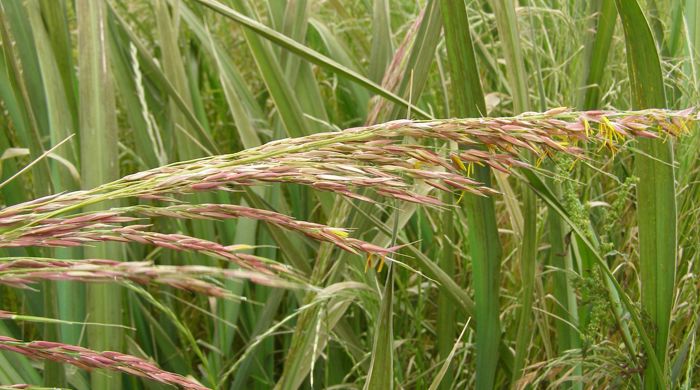Zizania latifolia
Manchurian wild rice
Family: Poaceae
Origin: Asia

Regional Pest Management Plan (RPMP) status
- Notifiable organism
- National Pest Plant Accord Species
General description
Rhizomatous, mat-forming perennial grass < 3 m tall. Leaves are erect, < 2.5 m long, harsh, dull grey-green and pointed, with stout midribs. Flowers are borne in < 60 cm long, purple/brown flowerheads in November – December.
What you need to know
To help protect our environment:
- You must not breed, distribute, release or sell Manchurian wild rice. As Manchurian wild rice is a National Pest Plant Accord species, these restrictions apply within the Auckland region and across the whole of New Zealand.
If you see Manchurian wild rice anywhere within the Auckland region, you must report it to Auckland Council at pestfree@aucklandcouncil.govt.nz.
Habitats
Freshwater and saline water body margins, wetlands, tidal flats, pasture, ditches.
Dispersal
Seeds dispersed by water, wind and possibly birds. Vegetative spread from rhizome fragments. Human-mediated dispersal through movement of contaminated soil, boats, equipment, machinery and livestock.
Impact on environment
Forms dense clumps, displacing native vegetation and altering habitat structure. Displaces valuable pasture species, clogs waterways and exacerbates flooding.
Control
Recommended approaches
Do not attempt to undertake control of this species. Please report to Auckland Council.
;Caution: When using any herbicide or pesticide please read the label thoroughly to ensure that all instructions and safety requirements are followed.





